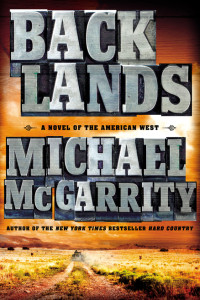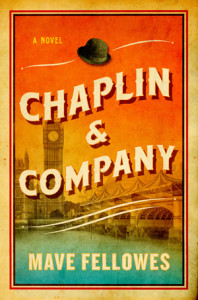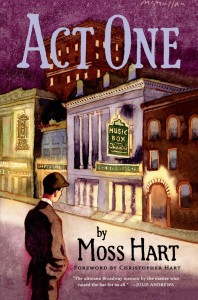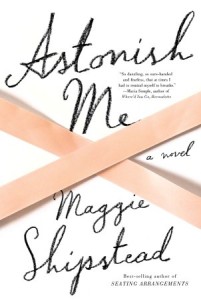 Darn good, old-fashioned Western storytelling: Western nostalgia and the beauty and serenity of southern New Mexico (1920 – 1943): Second in a trilogy, Backlands illuminates New Mexico’s heart and spirit in a family saga as expansive as the landscape. By centering on one family – the Kerneys – it offers a personal understanding of how the years of the stock market crash, Depression, Dust Bowl, Civilian Conservation Corps, and WWII’s Army Specialized Training Program affected the lives of hardworking ranching families in New Mexico’s desert Southwest.
Darn good, old-fashioned Western storytelling: Western nostalgia and the beauty and serenity of southern New Mexico (1920 – 1943): Second in a trilogy, Backlands illuminates New Mexico’s heart and spirit in a family saga as expansive as the landscape. By centering on one family – the Kerneys – it offers a personal understanding of how the years of the stock market crash, Depression, Dust Bowl, Civilian Conservation Corps, and WWII’s Army Specialized Training Program affected the lives of hardworking ranching families in New Mexico’s desert Southwest.
The Tularosa basin, where much of the novel is told, lays in the remote backlands of the San Andres mountains overlooking the Mescalero Apache reservation, a “land of hidden canyons and wide mesas and high pasturelands and forested mountaintops and rugged mountains.” The prose is “quiet, serene, and calming” resonating the scenery of the Tularosa:
“an expanse that filled the eye, stretched beyond blindingly brilliant sand dunes to the south and dangerous, ink-black malpais to the north. Most days the basin shimmered under crystal-clear skies, with mountains looming and lurking in all directions.”
Backlands stands well alone. But its feel-good values are so beautifully told you’ll be sorry when it ends and anxious for the final chapter. If you can’t wait, or need another reminder about freedom and the “Code of the West” that vividly reveals “what kind of life a person lives” – especially when that life is physically, emotionally, and financially challenged – treat yourself, as I intend to do, to the saga’s beginnings, Hard Country (1875 – 1918). The prose and the deft storytelling are a tonic.
The creative writing maxim – write what you know – is skillfully on display. Not only is New Mexico the author’s home, but I reckon his psychotherapy and social work background is why the novel is so heartfelt. (In the same way that McGarrity’s extensive law enforcement experience undoubtedly plays into the success of his Kevin Kerney crime series, a dozen penned from 1996 to 2008 prior to creating this New Mexican epic, called a prequel to the Kerney mysteries.)
As a fine Western novel should, this one is filled with colorful stories and characters that sweep us along its 503 pages. They all revolve around the central character, Matthew Kerney:
MATT: You’ll visually watch him grow from ages 8 to 30. He loves his Ma, his horse, reading, education, and a beautiful gal, Beth Merton, who has come to New Mexico from Cleveland to be healed by its dry climate in one of the State’s TB sanatoriums. We see him as a cowboy, a cattle rancher, an engineering student, an auto mechanic, a forest service ranger, and an army officer. He’s a good, obedient boy and a very decent man who goes through a lot of tough times, often feeling an “empty weariness about life.” But he’s brave and resilient.
EMMA: Matt’s Ma. She has a serious heart condition, is fiercely independent, a smart financial planner, and divorced early from Matt’s Pa. That’s why some of the novel is set in Las Cruces, where Matt and Emma live, not on Pa’s Double K ranch in the Tularosa. While she gets lonely, it’s “not as important as my freedom.” Emma has earned notoriety for having endured a roundup trail drive. Perfectly introduced to us at the time of the passage of the 19th amendment, the women’s right to vote, she’s a terrific example of how a ranch woman’s life was more equal to a man’s in the early 20th century than a woman’s from the East. That accounts for her native counterparts praise when a famous Western writer, Eugene Manlove Rhodes, writes a story about her cowboying escapades, yet she’s scorned by those eastern women. Rhodes is one of several authentic New Mexican historical figures nicely folded into the novel. He wrote about the beauty of the Tularosa, his stories serialized in magazines like The Saturday Evening Post, but he’s all but forgotten – except for now. Perhaps Rhodes’ poetic writing inspired the author to bring him back to life?
PATRICK: Matt’s ornery Pa with a past that haunts him. One of Teddy Roosevelt’s Rough Riders in the Spanish American War, so he’s not afraid of hardships but a disagreeable character whose estranged from Matt, does best alone, and while not physically abusive to Emma hurt her “with words and looks.” To his credit, he cares deeply about the Double K ranch, “one of the nicest outfits on the Tularosa” despite its lack of modern conveniences. His character shows us that sound agricultural practices and foresight matters in the cattle ranching business, under the constant stress of weathering nature and financial crises.
PATCHES: Matt’s pony is to be appreciated because “you can learn a lot about a man by his horse.” In fact, “sometimes a man’s pony can be his best friend, the most important critter in a cowboy’s life.”
THE IGNATIO & LUCERO families: Teresa Ignatio is Matt’s maternal aunt, and Nestor and Gaudalupe Lucero are Matt’s neighbors in Las Cruces. Both Mexican families pay tribute to the historical heritage of Hispanics in settling New Mexico and the role of the Catholic church; gracious hospitality and fiestas; and the “closeness and affection” of proud families – proud of their traditions and their State.
AUGUSTA & CONSUELO MERTON: Gus, a professor at the New Mexico College of Agriculture and Mechanics in Las Cruces and his wife Consuelo are the beloved and watchful aunt and uncle of Matt’s “wonderful love” Beth. Their hacienda is a great example of New Mexico’s ubiquitous architecture: thick adobe walls, “low-beamed passages” that sprawl onto an open courtyard with endless views of the desert. Beth is another strong female character: she dreams to become a doctor.
VERNON CLAGETT: What would a Western be without an outlaw? This one allows the author to depict New Mexican law enforcement in the early 20th century.
ERNIE PYLE and BILL MAUDLIN: Pyle, the renowned WWII reporter and Maudlin, Pulitzer-Prize winning WWII cartoonist, add two more compelling New Mexican historical figures to the cast of characters. They help tell the fascinating story of New Mexico’s role in WWII: Operation Husky.
There are more characters, more stories, but to say more would be a spoiler.
With all this telling of tales comes a delightful mix of old-fashioned, Western language – hornswoggling and lickety-split and hogwash and greenbacks and jake – and a swell balance of depicting New Mexico’s “stark beauty” against its parched lands and sobering history. As Matt’s friend, Boone, declared when he set eyes on the Tularosa: “I’ve never seen anything like this place.” You may feel the same, when you see it through the visually evocative prose.
Lorraine



